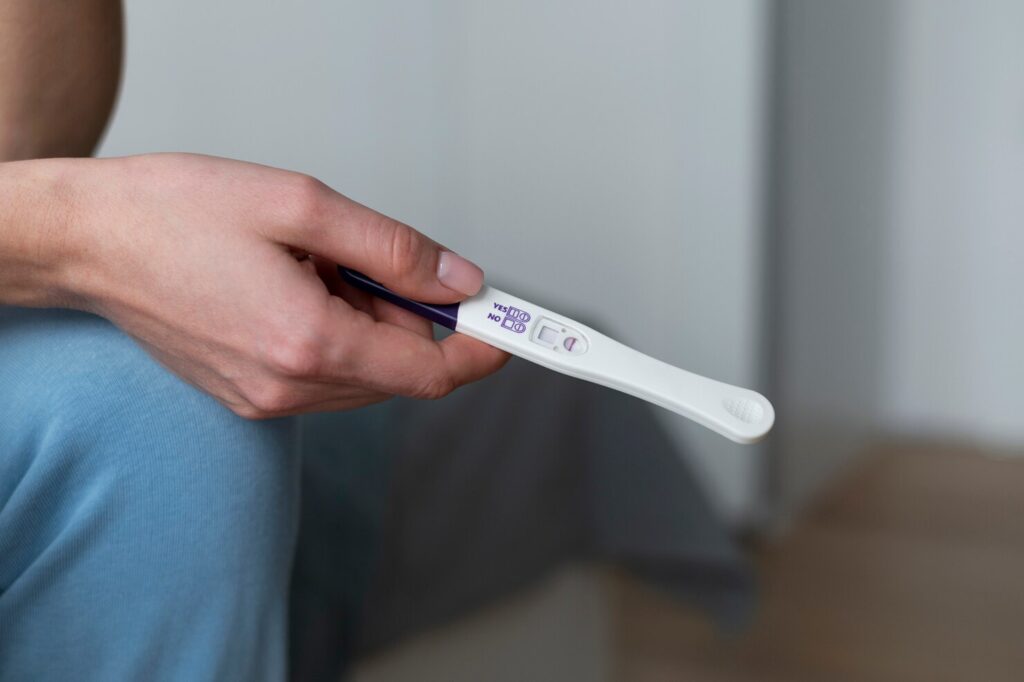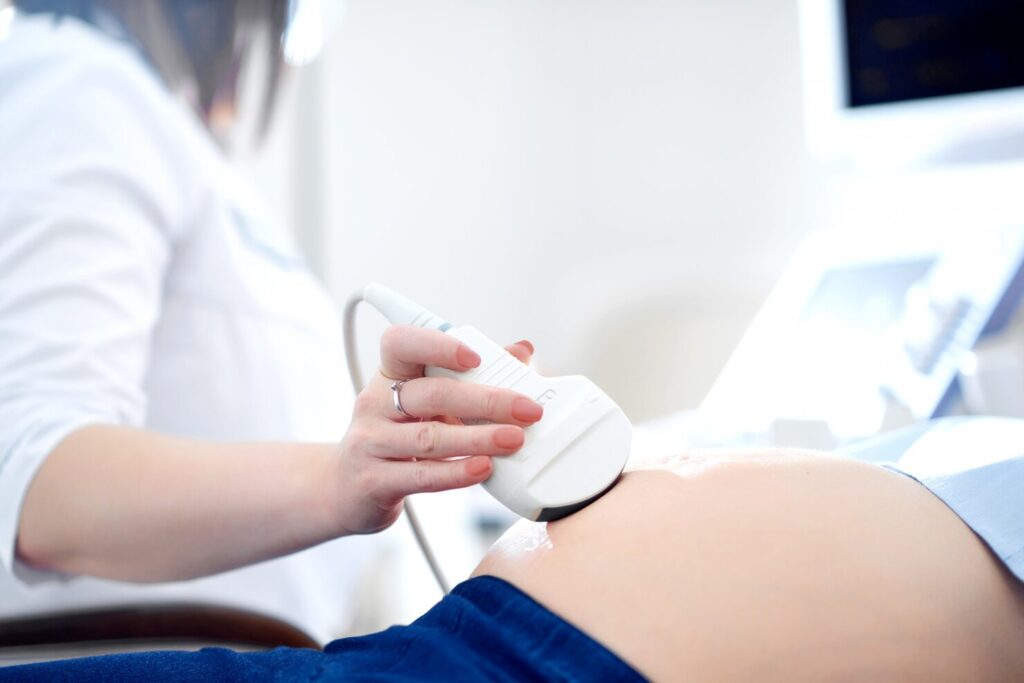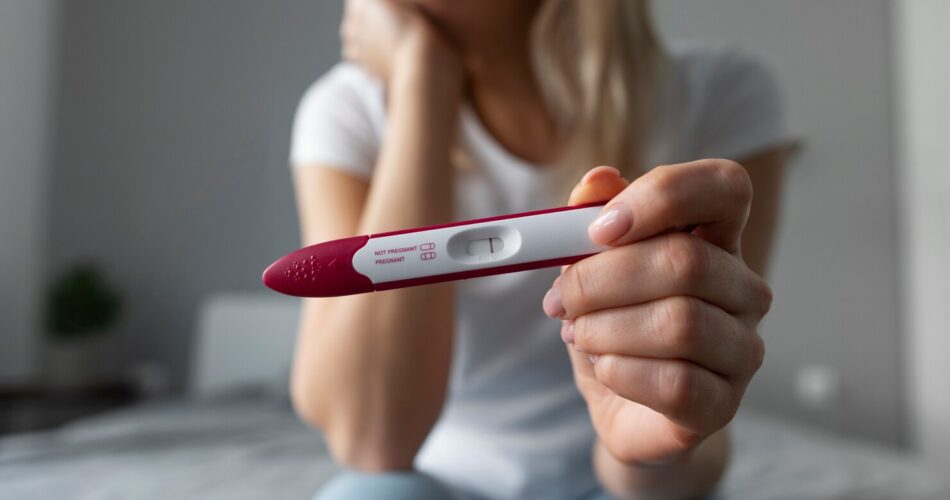The desire to become a mother is one of the most natural aspirations for women, yet health issues can hinder a woman’s ability to conceive and give birth. According to statistics, a third of couples who wish to become parents cannot do so due to female infertility. The causes of this condition can be varied, and this diagnosis is not a definitive sentence and does not mean that motherhood is forever inaccessible for such a woman.
However, to successfully combat the condition, it is first necessary to determine the causes of female infertility. This will help develop a well-informed strategy and tactics for fighting the disease and achieving positive results more quickly. If a married couple, having regular sexual activity and not using contraceptives, cannot conceive a child within 12 months, only a doctor can assist in this matter.

Types of Female Infertility
The success of the undertaken measures depends on which type of female infertility is diagnosed. There are two forms of the condition:
- primary — where a woman is unable to give birth due to the impossibility of either conceiving a child, carrying, or delivering a living child after beginning sexual activity;
- secondary — the inability to conceive again after a previous pregnancy has occurred for a woman or she has previously been able to carry and give birth to a living child.
Absolute infertility is considered when a woman, for some reason, lacks a uterus or fallopian tubes. In the past, this type of female infertility made it absolutely impossible to carry a baby independently. However, the development of reproductive technologies, such as the IVF method (in vitro fertilization) or surrogacy, gives such women a chance to become a mother to a biologically related child.
Relative infertility in women
In addition to the classification of the disease by the principle of primary and secondary, there is also the concept of relative infertility. Temporary or relative female infertility is often associated with reasons that are currently an obstacle to conception. The disease, for example, may be a consequence of anovulation — a monophasic menstrual cycle that, while maintaining regularity of uterine bleeding, is characterized by the absence of ovulation.
Such a situation may arise due to various circumstances, including puberty, climate change, or the onset of menopause. Relative female infertility can be overcome if the problem is taken seriously in time, a doctor is consulted, the right strategy is developed, and the chosen treatment concept is strictly adhered to.

Main Causes of Female Infertility
The most important determining factor for classification is the reasons that hinder conception. These include infertility, defined as:
- Tubal-peritoneal – expressed as the obstruction of the fallopian tubes during the development of cilia atrophy, which ensure the movement of the egg inside the tubes, or inflammatory processes;
- Endocrine – as a rule, is a consequence of ovarian pathology, manifesting in their depletion, the presence of polycystic ovary syndrome, as well as dysfunction of endocrine (thyroid gland, hypothalamus, adrenal glands, pituitary) and non-endocrine organs (kidneys, liver). This type of female infertility can also be caused by psychological stress, metabolic disorders. A key aspect of endocrine infertility is always a failure in the mechanism of ovulation – anovulation.
- Immunological – characterized by the production of antibodies to male germ cells.

Other Causes of Infertility
Among the causes of female infertility are also pathologies or the absence of the uterus — the organ where the embryo implants and develops into a fetus over nine months – known as uterine infertility. This pathology can be congenital and may manifest as a double or bicornuate uterus, the presence of an intrauterine septum, and it can also be acquired, arising from polyposis, fibroids, scarring of the uterus, its removal, or other factors. The presence of endometriosis – pathological growth of the inner uterine lining beyond its boundaries – can also cause this condition.
A chromosomal pathology leads to female infertility. Consciously or subconsciously, a woman’s unwillingness to have a baby can lead to sterility and psychological forms of infertility. Sometimes it’s fear of pregnancy and childbirth, other times it’s the unwillingness to become a mother to a child by this man or the reluctance to undergo physical changes that pregnancy might bring.

Factors of Female Infertility
A negative factor for female infertility that can affect the development of the disorder is age. At birth, a woman carries about 400,000 eggs. However, the number of inactive follicles increases with age, reducing their response to hormones. As a result, the egg does not reach the maximum maturation phase, leading to anovulatory cycles.
Another factor of female infertility is “egg aging.” It is associated with chromosomal changes that lead to the impossibility of fertilizing the egg, development pathologies of the embryo, provoking miscarriages. The classification of factors also includes idiopathic or “infertility of unknown origin.” It is determined if a comprehensive examination of both partners does not reveal reasons why pregnancy does not occur. This situation is not so rare and is characteristic of approximately 5-7% of infertile couples.
Symptoms of Female Infertility
Usually, reproductive dysfunction proceeds without a pronounced pathognomonic sign. However, if a woman consults a doctor with suspected infertility, the specialist can establish its presence from indirect, secondary symptoms:
- discomfort or painful sensations in the pelvic area;
- irregularities in the menstrual cycle;
- heavy, painful periods;
- infertility in families of close relatives;
- unusually heavy vaginal discharge with unusual odor and color, which may indicate the presence of an inflammatory process;
- being overweight or excessively underweight;
- thyroid dysfunction (under the observation of an endocrinologist);
- pronounced hirsutism – excessive hair growth;
- male body type;
- severe forms of acne;
- presence of chronic pathologies, developmental defects unrelated to the reproductive system.

Signs of the ailment
The inability to conceive a pregnancy after one year of regular unprotected intercourse with one sexual partner is the main sign of female infertility. The one-year term is determined through statistical calculations. Evidence shows that pregnancy occurs within the first three months in 30% of healthy couples with regular intercourse. Over the following seven months, another 60% of couples conceive a child. After eleven to twelve months of regular intercourse, fertilization occurs in the remaining 10%.
This implies that a year is a sufficient period to evaluate a specific couple’s ability to conceive a child. If pregnancy has not occurred during this time despite all efforts, absence of contraception, and no pathologies in the partner, it makes sense to talk about the presence of female infertility.
Diagnosis
In order to prescribe a competent and effective treatment for female infertility, it is necessary to first clearly diagnose it. Gynecological examination and ultrasound are performed at the very initial stage to assess the size and structural features of the ovaries and uterus and to identify any pelvic organ pathologies. A blood test for hormones is also prescribed, allowing for the assessment of endocrine system and ovarian function.
Self-charting of basal body temperature over 2-3 menstrual cycles by the patient helps in diagnosis and is used to assess ovulation. At the discretion of the doctor, additional examinations such as ultrasound monitoring of follicle maturation and ovulation may be prescribed.
What other methods are used
Successful treatment of female infertility may become possible by utilizing the entire array of available modern techniques, including laparoscopy, which is both a therapeutic and diagnostic procedure. During a laparoscopy procedure, the specialist can observe a clear magnified image of the pelvic organs on the screen. If causes of infertility are discovered during the procedure, the specialist has the opportunity to address them directly: removing endometriosis foci, ovarian cysts, adhesions.
Hysteroscopy is also used for a more precise study of the uterine cavity, detecting abnormalities not diagnosed through ultrasound and regular examinations. The purpose of hysterosalpingography is to determine the patency of the fallopian tubes. The examination is based on the introduction of a contrast medium into the uterus, followed by a series of images.
Treatment of Female Infertility
The choice of treatment method for female infertility is determined by the cause of the pathology. For instance, drug therapy is used for female infertility caused by infectious diseases. In such situations, antibiotic therapy is prescribed—medications like ciprofloxacin, ofloxacin, metrogyl, metronidazole, and similar agents.
Conservative treatment is also prescribed for symptoms of the endocrine form of the disease. This treatment is based on the use of medications containing hormones, including clomid, recombinant or urinary gonadotropins. In diagnosed immunological infertility, corticosteroids and antihistamines are usually prescribed.

What Methods Are Used
Surgical treatment methods are also used to combat female infertility. These methods are usually effective in identifying uterine and fallopian tube pathologies. In such cases, minimally invasive surgeries, which cause minimal harm to the patient, are carried out. These procedures are performed only in a hospital setting. The rehabilitation period in this case does not exceed 3-5 days.
The most popular surgical methods are hysteroscopy and laparoscopy, which are also used for diagnostic purposes. In female infertility caused by psychological factors, which, according to statistics, occur in approximately 30% of cases of reproductive function problems, the patient is affected by psychological factors – past shock states, stresses. In such situations, therapists and psychologists can help solve the problem.


Download the app and get 7 days free use
 eng
eng rus
rus deu
deu spa
spa fra
fra ita
ita por
por srp
srp tur
tur ukr
ukr por
por bos
bos



